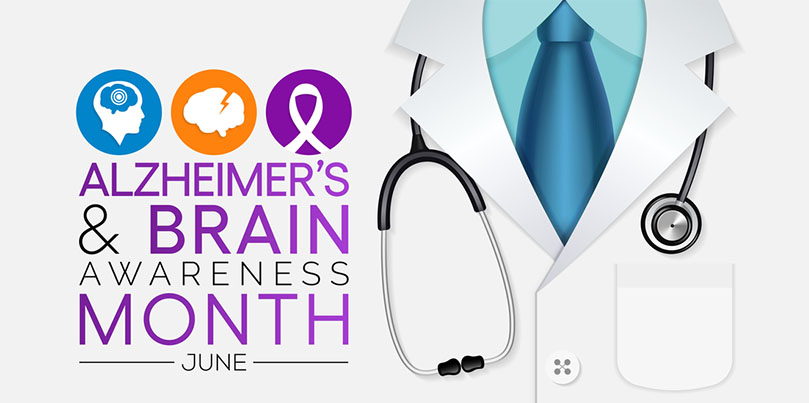ALZHEIMER’S AND BRAIN AWARENESS MONTH JUNE
What is Alzheimer’s Disease?
- Alzheimer’s disease (AD) is the most common type of dementia and one of the most frequent neurodegenerative pathologies in elderly people, constituting about 90% of the cases of dementia
- AD is characterized by its irreversibility and progressive functional, cognitive, and behavioral loss. It is usually accompanied by various brain disorders such as amnesia, agnosia, apraxia, and aphasia.
- 24 million people in the world suffer from AD, and it is expected that by 2050 this number will be 4 times greater.
Signs and Symptoms of Alzheimer’s Disease


Overview of treatment program for individuals with memory impairment disorders:
Research shows that:
- Regular exercise may delay a decline in the ability to perform tasks in people who have Alzheimer’s disease by improving their strength, balance, and walking ability.
- Physical activity can improve brain function and memory. This is true for healthy older adults or for those with mild cognitive problems.
- Regular exercise may delay the onset of Alzheimer’s disease in healthy older adults.
Physical therapists are trained to use a variety of teaching methods, techniques, and unique approaches to treating people with Alzheimer’s disease, including:
- Strength training: Physical therapists can help train the weak muscles as well balance and proprioception training helping to train a muscle for unstable and uneven surfaces.
- Manual Guidance: Therapists would move the affected body part by using patient’s hand or touching any other part and set it into motion.
- Task Breakdown: Therapists can breakdown a complex task like “sitting in a chair” into simple pieces to achieve the functional goal.
- Visual and Auditory cueing: Therapists can plan treatment using verbal cueing strategies like giving simple, clear, and loud instructions to follow or visual feedback in the form of actions or colors.
- Mirroring: Therapists can demonstrate the patient how to do a certain movement.
- Assistive devices: Therapists can advice assistive devices like a stick or walker depending on patient’s functional demands for proprioceptive feedback or patient safety.
You need to see a Physical therapist who is specialized in Neurological Disorders as well as experienced with Geriatric Population.
If you or your loved one are aged 50 years or older and need specialized Physical therapy, please contact our specialist.



